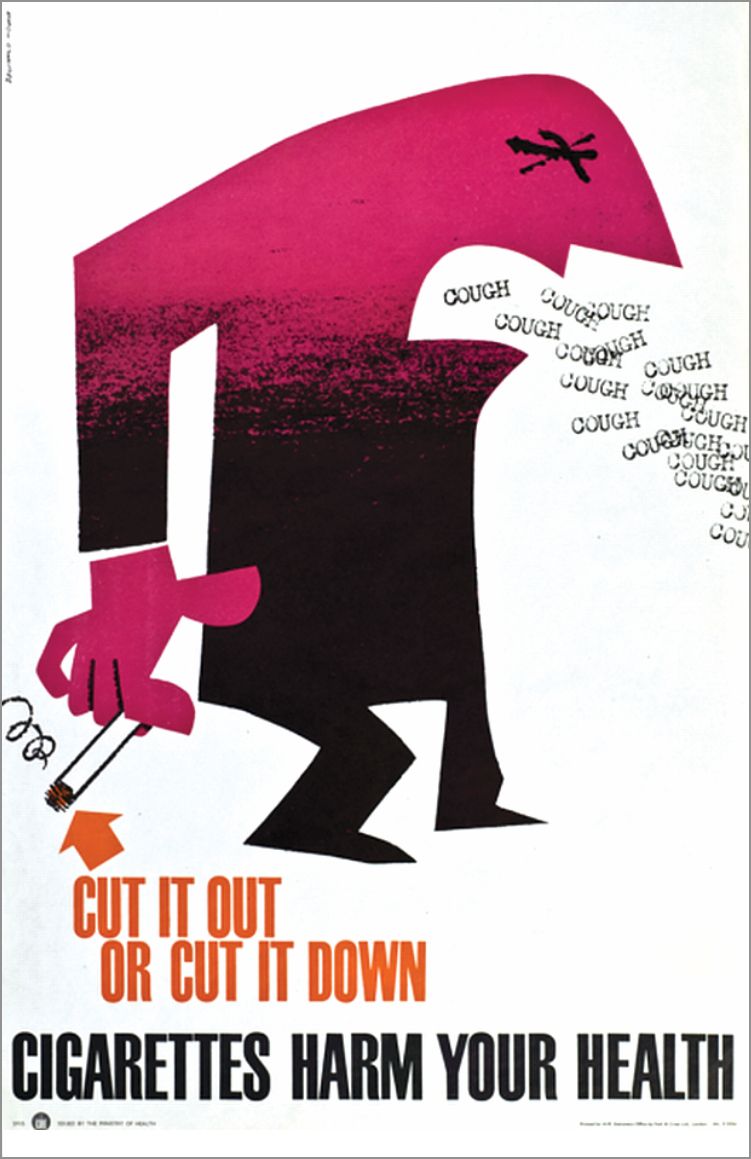Endless front matter
DOI: 10.1063/PT.3.4555
In November 1944, as Allied armies neared Nazi Germany’s industrial heartland, President Franklin Roosevelt wrote to electrical engineer Vannevar Bush to request a report on how science could be harnessed in peacetime. “New frontiers of the mind are before us,” wrote the president, “and if they are pioneered with the same vision, boldness, and drive with which we have waged this war, we can create a fuller and more fruitful employment and a fuller and more fruitful life.”

Reginald Mount designed this antismoking poster for the UK government in the 1960s.
SCIENCE MUSEUM, LONDON, CC BY-NC-SA 4.0

Bush was an apt choice for author. In June 1941 Roosevelt had appointed him director of a new agency, the Office of Scientific Research and Development, which successfully coordinated scientific R&D for military ends. Bush finished his report eight months after getting the request and delivered it to Roosevelt’s successor Harry Truman.
The report, Science—The Endless Frontier, advocated establishing a national science foundation to fund curiosity-driven basic research conducted largely at universities. 1 The creation of NSF five years later was not inevitable. Bush and his allies had to prevail over rival proposals for a more applied, mission-driven science agency. As historian Emily Gibson observed recently, the enduring legacy of Science—The Endless Frontier lies not just in NSF’s continued success but also in the continued debate among policymakers on the extent to which government-funded science should be curiosity driven or mission driven. 2
Bush’s 75-year-old report has another lesson for us. Its literary style and structural organization are exemplary. The main body is divided into chapters, which are further divided into sections of clear, continuous prose. Enumerated lists are used sparingly. Whenever Bush needed to emphasize a point at the end of a section, he used italic, which is easier on a reader’s eyes than shouty bold.
Another exemplar of presentation and clarity is the 1962 report of the Royal College of Physicians (RCP), Smoking and Health, which summarized the evidence gathered by Richard Doll, Austin Bradford Hill, and others that smoking causes lung cancer. 3 Like Science—The Endless Frontier, Smoking and Health has just two layers of organization.
In writing the report, the RCP aimed to influence UK government health policy and to help physicians advise their patients on the risks of smoking. But the RCP also wanted to change people’s habits. Perhaps for that reason, the report was printed as a book, with book-sized margins, left and right justification, hyphenation of words at the ends of lines, and a book-typical number of characters per line (about 70 including spaces).
People are used to consuming tens of thousands of words in book form. For-profit publishers are skilled at arranging words on pages in ways that don’t strain readers’ eyes. Smoking and Health, the book, is 70 pages long. Within a year of publication, it had sold 33 000 copies in the UK and 55 000 in the US.
Unfortunately, too many book-length reports from nonprofit publishers—notably the National Academy of Sciences—violate the principles of good, reader-friendly design. They inflict on readers page after page of front matter, their lines are eye-strainingly long, and bullets and boldface abound.
If you want people to read your report, make it readable.
References
1. V. Bush, Science—The Endless Frontier: A Report to the President on a Program for Postwar Scientific Research, NSF (1945; reprint, 1990).
2. E. K. Gibson, Science 369, 258 (2020). https://doi.org/10.1126/science.abb4913
3. Royal College of Physicians, Smoking and Health: Summary of a Report of the Royal College of Physicians of London on Smoking in Relation to Cancer of the Lung and Other Diseases, Pitman Medical (1962).

